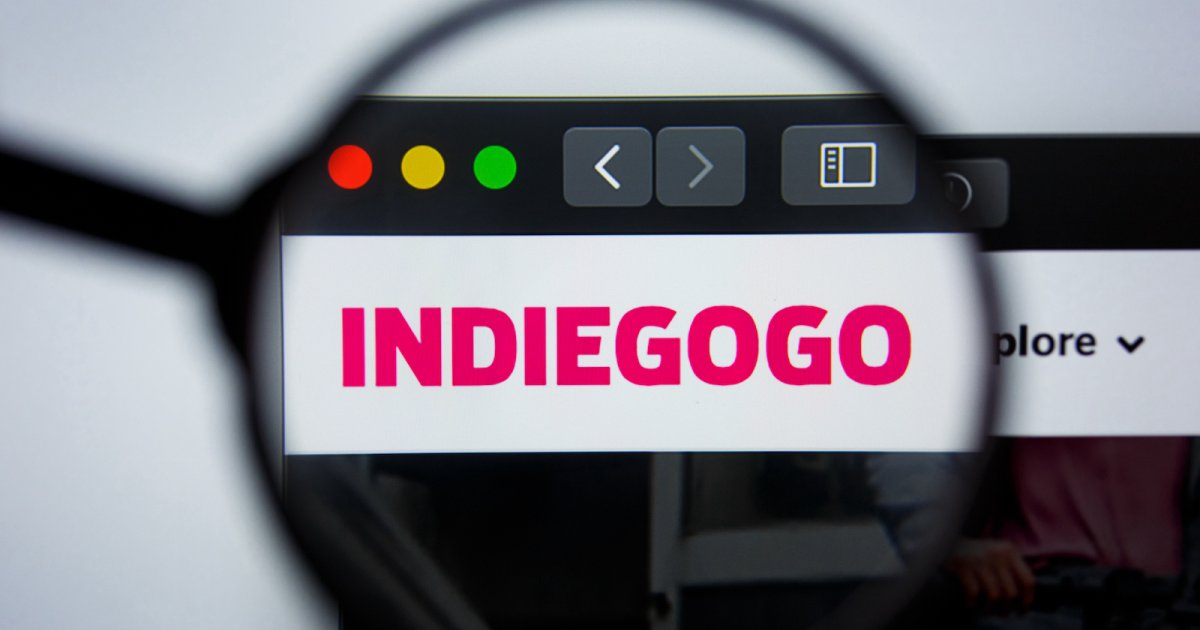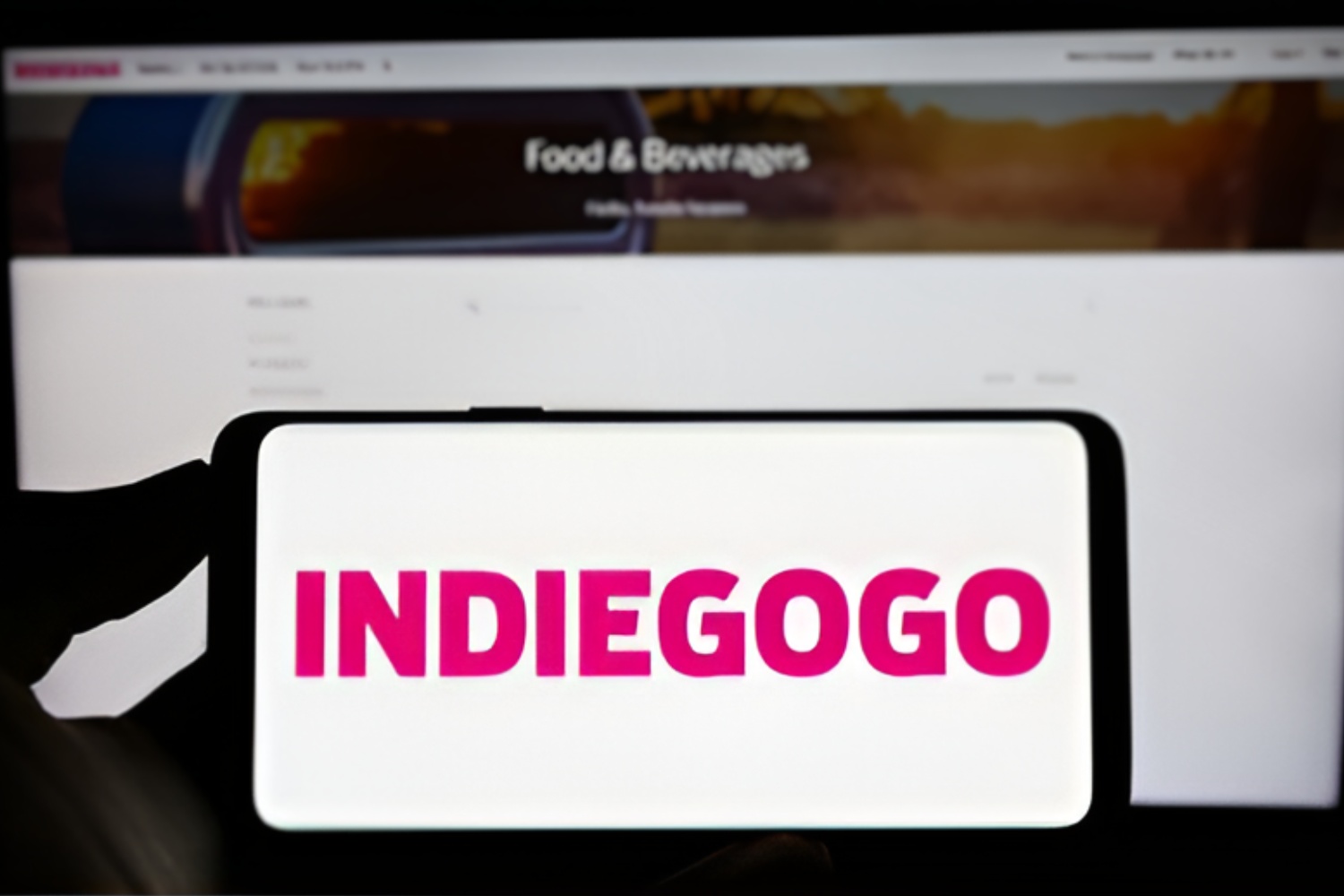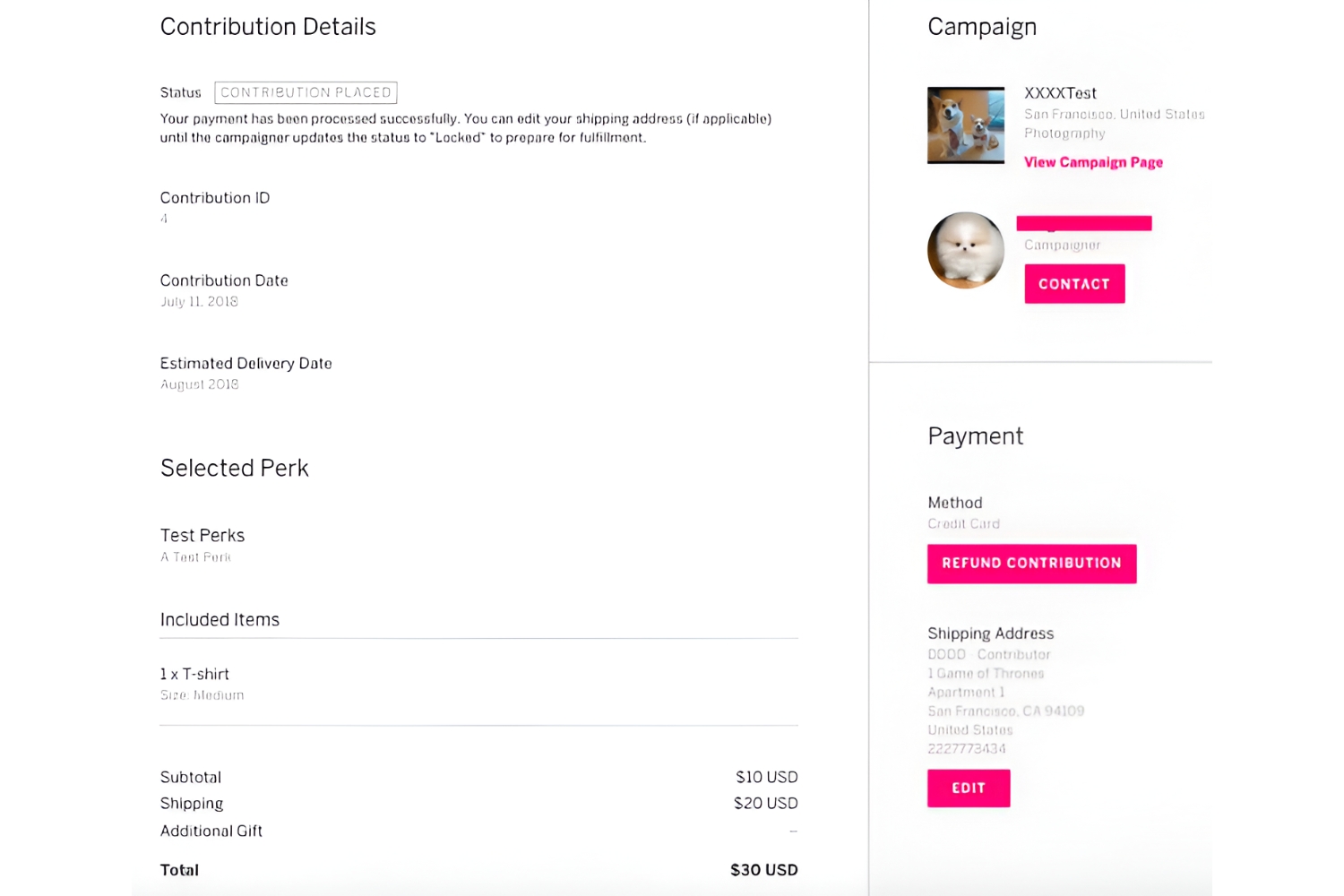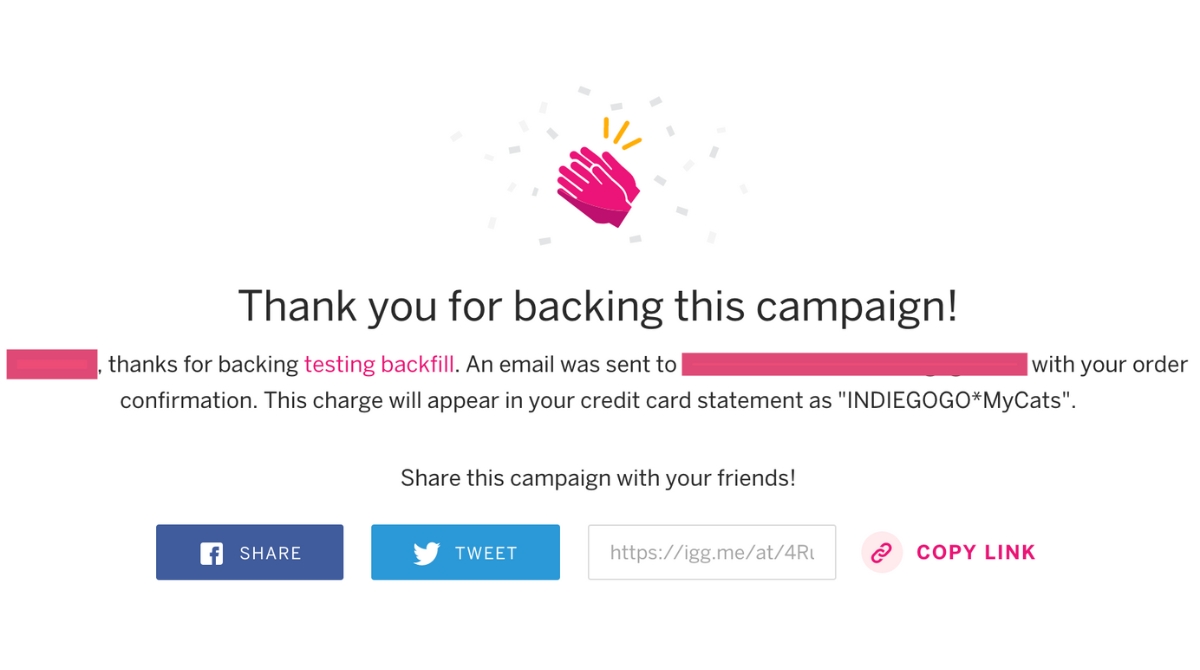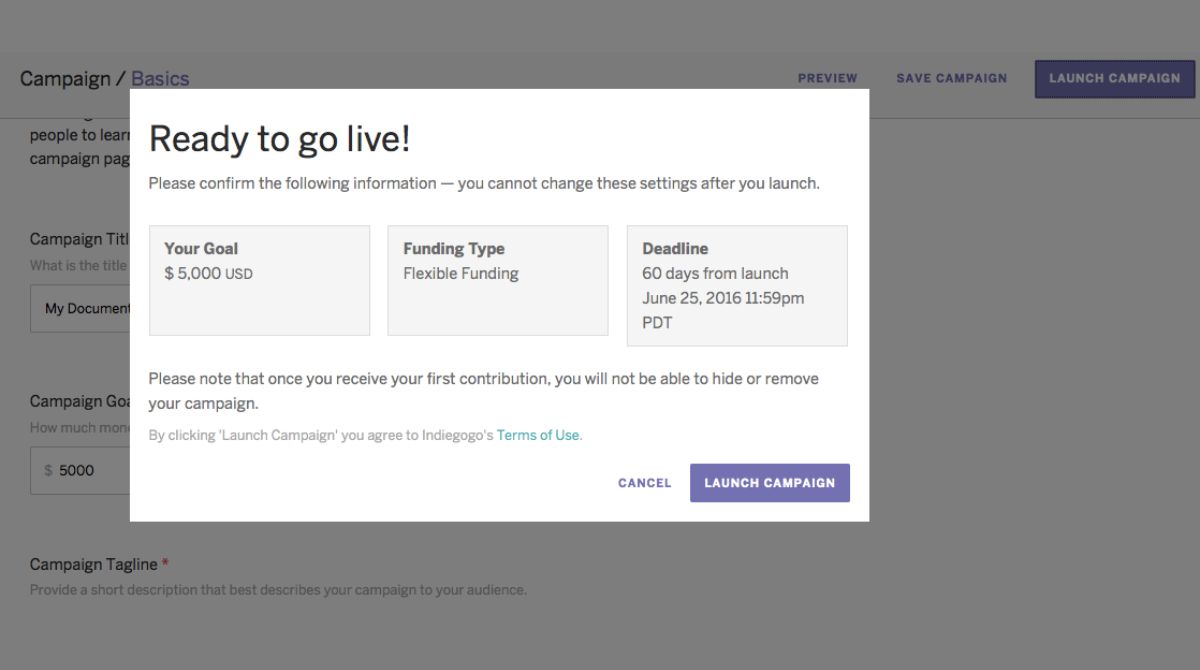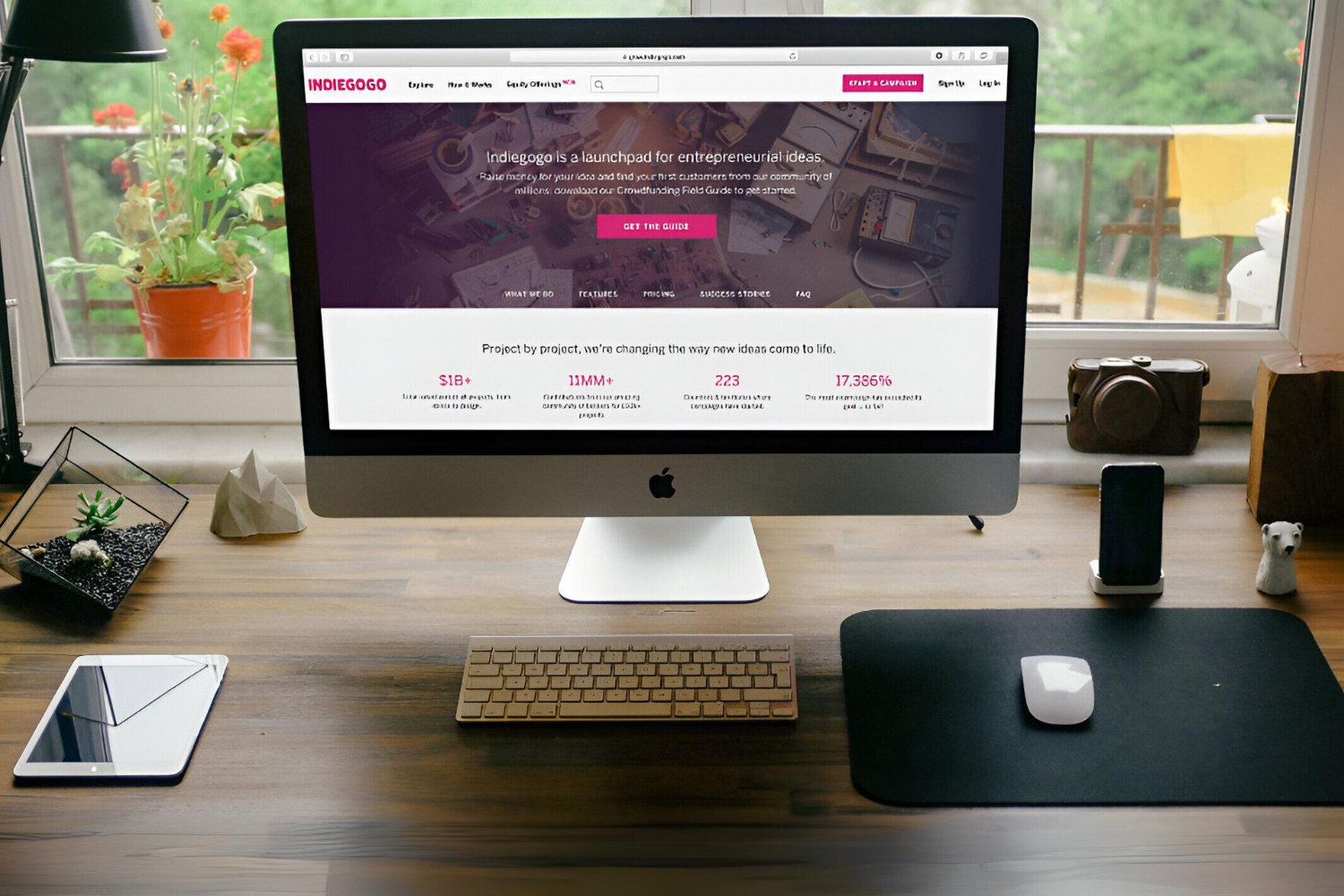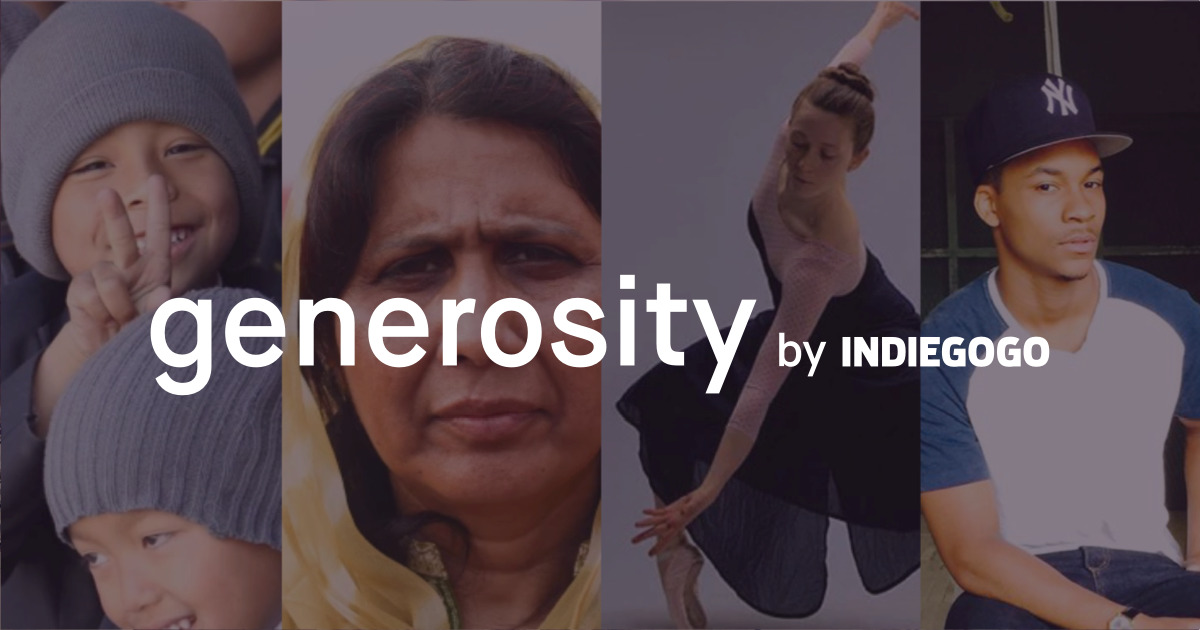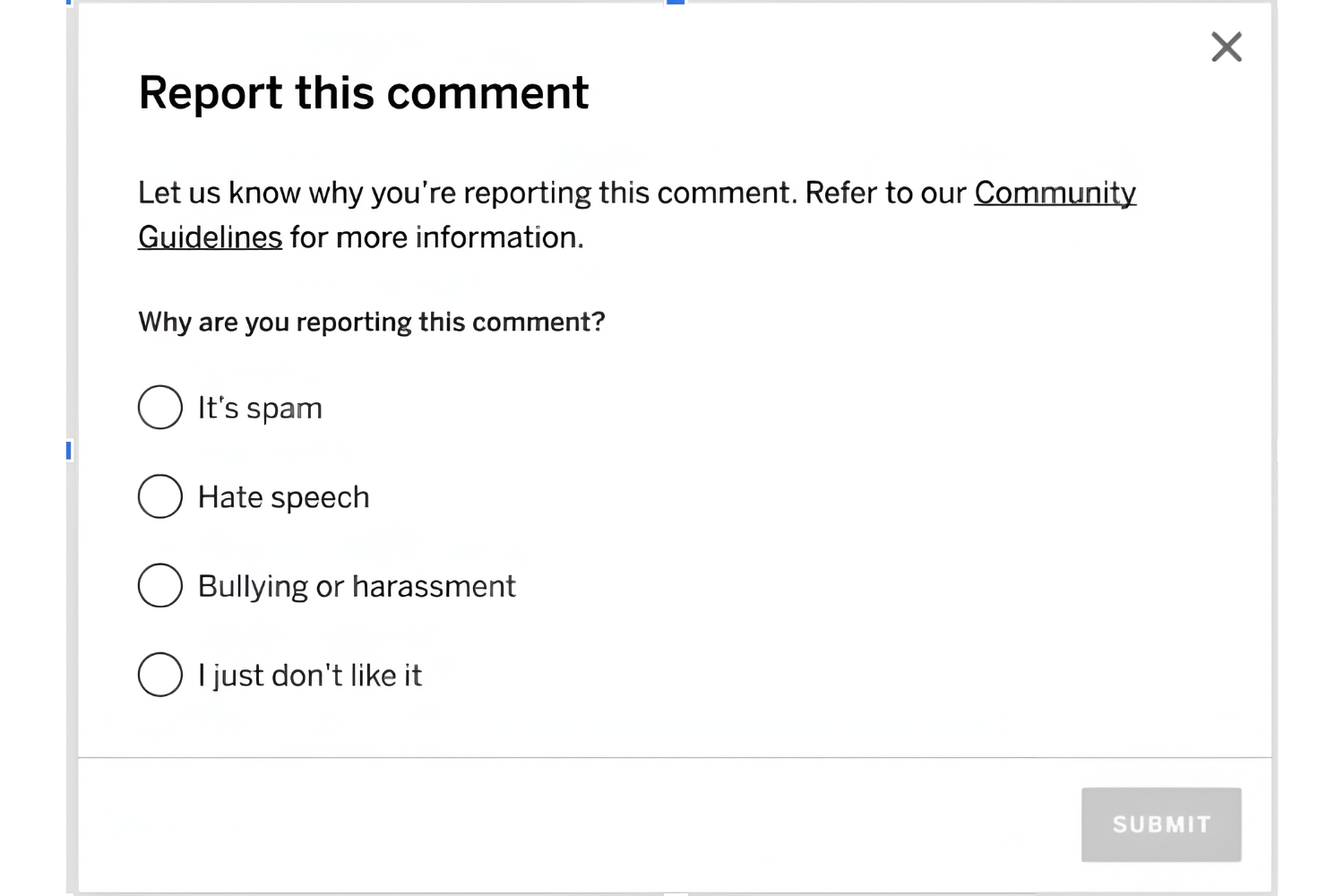What is Indiegogo?
Indiegogo is a popular crowdfunding platform that allows individuals, entrepreneurs, and businesses to raise funds for their projects, ideas, or causes. It provides a space where innovators and creators can showcase their concepts, engage with potential contributors, and gather financial support to bring their visions to life. With a wide range of categories such as technology, arts, social causes, and more, Indiegogo offers a platform for diverse projects to gain exposure and funding.
As one of the leading crowdfunding platforms, Indiegogo provides an opportunity for individuals and groups to bypass traditional funding sources and seek support directly from their target audience. It enables contributors to become part of the journey by financially backing projects they believe in and receiving exclusive perks in return.
Indiegogo operates on a flexible funding model, meaning that even if a campaign fails to reach its funding goal, the project creator still receives the funds contributed by backers. This allows creators to pursue their projects even if they fall short of their initial targets.
Indiegogo also offers additional features such as InDemand, which allows successful campaigns to continue accepting contributions even after the initial funding period has ended. This enables ongoing support and sales for projects that have gained traction and popularity. Furthermore, Indiegogo provides access to a global community of potential supporters, expanding the reach and visibility of projects to a larger audience.
Whether you’re an entrepreneur with a groundbreaking tech idea, an artist looking to launch a new creative venture, or someone passionate about supporting innovative projects, Indiegogo offers a platform to connect creators and contributors in a dynamic and collaborative way.
Overview of the Crowdfunding Process
Crowdfunding is a unique approach to raising funds where individuals, known as contributors or backers, come together to support projects they are interested in. The process involves multiple steps that facilitate the connection between project creators and contributors. Here is an overview of the crowdfunding process on Indiegogo:
1. Project Creation: The first step is for project creators to create a campaign on Indiegogo. This includes providing a detailed description of their project, setting a funding goal, and determining the campaign duration.
2. Campaign Promotion: Once the campaign is live, project creators must actively promote and share their campaign with their networks and through social media. This helps drive awareness and attract potential contributors.
3. Contributor Support: Interested individuals can explore the various campaigns on Indiegogo and choose the ones they want to support. They can contribute financially to the campaign in exchange for exclusive perks or rewards offered by the project creator.
4. Funding Options: Indiegogo offers different funding options for contributors. These include fixed funding, where the campaign must reach its goal in order for funds to be collected, and flexible funding, where project creators can keep all funds raised, even if the campaign falls short of the goal.
5. Campaign Completion: Once the campaign duration ends, the project creator is responsible for fulfilling the promises made to the contributors, such as delivering perks or completing the project as described in the campaign.
6. Continuous Support: Indiegogo’s InDemand feature allows successful campaigns to continue accepting contributions even after the initial funding period. This helps creators keep the momentum going and attract further support.
7. Project Completion: Ultimately, project creators work towards completing their projects and delivering the final results to their backers. This could include manufacturing and shipping products, launching creative ventures, or implementing social causes.
Crowdfunding on Indiegogo brings together creators and contributors, fostering a collaborative and supportive community where innovative ideas and projects can come to life. It provides an avenue for individuals to directly participate in the realization of projects they’re passionate about.
How Indiegogo Charges Contributors
Indiegogo employs a user-friendly payment system to facilitate the contribution process for backers. When contributors pledge their support to a campaign, they need to understand how Indiegogo charges them and what payment options are available. Here’s an overview of how Indiegogo charges contributors:
1. Payment Methods: Indiegogo offers several payment methods to make it convenient for contributors to pledge their support. This includes credit card payments and alternative payment options like PayPal and Apple Pay.
2. Authorization Hold: When a contributor decides to back a campaign, Indiegogo places an authorization hold on their credit card or PayPal account for the pledged amount. This reserves the funds but doesn’t immediately charge the contributor.
3. Charging Process: Indiegogo charges contributors once the campaign has reached its funding goal or when the campaign duration ends, depending on the funding type chosen by the project creator. The charge is initiated by Indiegogo’s payment processor.
4. Refunds and Cancellations: In certain cases, such as when a campaign fails to reach its funding goal, or the project creator cancels the campaign, Indiegogo may refund the contributed amount to the backers. The refund process may vary depending on individual circumstances.
5. Fees and Charges: In addition to the contributed amount, Indiegogo charges a platform fee for the services provided. This fee is deducted from the total funds raised by the campaign and may vary depending on the funding type chosen and the country of the project creator.
6. Secure Transactions: Indiegogo takes security measures to ensure safe and secure transactions. Personal and financial information provided by contributors is protected using encryption techniques, providing a secure environment for online transactions.
7. Currency Conversion: For campaigns that accept payments in multiple currencies, Indiegogo offers currency conversion options. This enables backers from different countries to contribute to campaigns without worrying about exchange rates.
Indiegogo aims to simplify the payment process for contributors, ensuring a smooth experience throughout the crowdfunding journey. By providing various payment options, secure transactions, and clear guidelines for charging and refunds, Indiegogo ensures transparency and accountability for both project creators and backers.
When Does Indiegogo Charge Contributors?
Indiegogo charges contributors based on specific timing and conditions related to individual campaigns. The charging process is determined by the funding type chosen by the project creator. Here are the common scenarios for when Indiegogo charges contributors:
1. Fixed Funding: In campaigns with fixed funding, Indiegogo charges contributors only if the campaign reaches its funding goal within the specified timeframe. If the campaign does not reach the goal, Indiegogo does not charge contributors, and they are not obligated to fulfill their contribution.
2. Flexible Funding: In campaigns with flexible funding, Indiegogo charges contributors regardless of whether the campaign reaches its funding goal or not. This means that even if the campaign falls short of the target, the project creator will still receive the funds contributed by backers.
3. End of Campaign: Indiegogo typically charges contributors once the campaign duration comes to an end. This ensures that all pledged amounts are collected and made available to the project creator for the intended purpose.
4. InDemand Campaigns: InDemand campaigns, which are extensions of successful campaigns, continue to accept contributions even after the initial funding period has ended. Indiegogo charges contributors to these campaigns according to the same rules as the original campaign.
It’s important for contributors to be aware of the specific conditions and timing for charging in each campaign they choose to support. This information is usually provided by the project creator within the campaign description or updates.
Contributors should also review the campaign’s refund policy, as Indiegogo may refund the contributed amount in certain cases, such as campaign cancellation or failure to fulfill promised rewards. The refund process and policies may vary depending on the circumstances of each individual campaign.
By understanding when Indiegogo charges contributors, backers can make informed decisions about supporting campaigns and be confident in the contribution process.
Funding Types in Indiegogo
Indiegogo offers different funding types that project creators can choose from when launching their campaigns. These funding types determine how contributions are handled and whether project creators receive funds, regardless of whether the campaign reaches its funding goal. Here are the common funding types in Indiegogo:
1. Fixed Funding: Fixed funding requires a campaign to reach its specified funding goal within the campaign’s duration. If the campaign fails to reach the goal, Indiegogo does not charge contributors, and the project creator does not receive any funds. This type of funding ensures that the project can move forward only if the target amount is met.
2. Flexible Funding: Flexible funding allows a campaign to collect funds regardless of whether the project reaches its funding goal or not. Even if the campaign falls short of the target, Indiegogo still charges contributors, and the project creator receives the funds raised. This type of funding gives project creators more flexibility to proceed with the project, even with partial funding.
3. All-or-Nothing: All-or-Nothing is a variant of fixed funding where the project creator sets a specific funding goal and a strict deadline. If the campaign fails to reach the goal within the deadline, Indiegogo does not charge contributors, and the project creator does not receive any funds. This type of funding ensures that the campaign is fully funded before proceeding.
4. InDemand: InDemand is an extension of successful campaigns that have reached their funding goals. It allows project creators to continue accepting contributions even after the initial campaign duration has ended. Contributions made to InDemand campaigns follow the same funding rules as the original campaign.
By offering various funding types, Indiegogo provides flexibility and options for project creators to tailor their campaigns according to their specific needs and goals. Contributors can choose to support campaigns based on their preferences for fixed or flexible funding models, knowing how their contributions will be handled based on the funding type selected by the project creator.
It’s important for project creators to select the appropriate funding type that aligns with their project’s requirements and objectives. They should carefully consider the advantages and limitations of each funding type to make an informed decision that best suits their campaign’s goals and expectations.
Perks and Rewards for Contributors
One of the exciting aspects of contributing to a crowdfunding campaign on Indiegogo is the opportunity to receive perks and rewards offered by the project creator. These perks serve as a way for project creators to show their appreciation to contributors and provide them with exclusive benefits. Here’s what you need to know about perks and rewards for contributors:
1. Tiered Perks System: Project creators often offer perks in different tiers based on the contribution amount. Each tier offers a unique set of rewards, with higher tiers typically providing more valuable and exclusive perks. This allows contributors to choose a tier that matches their level of support and desired rewards.
2. Exclusive Access: Project creators may offer contributors early access to their product or project before it’s available to the general public. This gives contributors a chance to experience the project firsthand and be among the first to benefit from it.
3. Limited Edition Items: Some campaigns offer limited edition items or collectibles as perks. These could be special versions of the product, signed copies, or unique merchandise that are only available to campaign backers.
4. Personalized Rewards: Project creators may offer personalized rewards as a gesture of gratitude for the support. This could include personalized messages, shout-outs, or even the opportunity to have input on certain aspects of the project.
5. Behind-the-Scenes Access: Contributors may have the chance to gain exclusive access to behind-the-scenes content, updates, or exclusive project updates. This gives contributors a deeper insight into the project’s development and progress.
6. Social Recognition: Project creators often recognize contributors on their campaign page or social media platforms. This allows contributors to receive public recognition for their support and be part of the project’s community.
7. Combination of Perks: Many campaigns offer a combination of perks, allowing contributors to enjoy multiple rewards based on their contribution level. This provides added value and a sense of satisfaction for contributors.
It’s important for contributors to carefully review the perks offered by campaigns before making a contribution. Understanding the perks helps contributors choose the most suitable campaign to support, based on the rewards that align with their interests and preferences.
Contributors should also be mindful of any limitations or conditions associated with perks and rewards, such as delivery timelines, geographic restrictions, or availability. Clear communication between project creators and contributors ensures a positive and rewarding experience for everyone involved.
Important Factors to Consider Before Contributing
Before making a contribution to a crowdfunding campaign on Indiegogo, it’s essential to consider several key factors to ensure a positive and informed decision. Taking the time to evaluate these factors can help contributors make thoughtful and confident choices. Here are some important factors to consider before contributing:
1. Project Details: Review the campaign description, project details, and updates provided by the project creator. Understand the project’s purpose, goals, and feasibility. Assess the project’s potential for success and whether it aligns with your own interests and values.
2. Campaign Updates: Look for regular and transparent updates from the project creator. Updates provide insights into the project’s progress, challenges, and any changes or improvements being made. Active communication indicates a responsible and dedicated project creator.
3. Previous Work or Experience: Research the project creator’s background, previous projects, or relevant experience. Evaluate their track record, credibility, and ability to deliver on their promises. This can help gauge the project creator’s capability and trustworthiness.
4. Funding Goal and Type: Consider the campaign’s funding goal and funding type (fixed or flexible). Assess whether the funding goal is realistic and achievable. Additionally, understand the implications of each funding type on the project’s execution and the project creator’s obligations.
5. Perks and Rewards: Carefully review the perks and rewards offered by the campaign. Assess their value, relevance, and whether they align with your interests or needs. Consider the level of contribution required to receive the desired perks. Evaluate if the perks are substantial and add value to your contribution.
6. Risks and Challenges: Understand any risks or challenges associated with the campaign. Project creators may outline potential risks or challenges in their campaign description or updates. Assess whether the project creator has provided a comprehensive plan to tackle these challenges and mitigate risks.
7. Timeline and Delivery: Review the estimated timeline for project completion and delivery of perks. Consider any potential delays and whether there is a realistic plan in place. Understand the project creator’s commitment to fulfilling their promises on time and any potential contingencies.
8. Customer Reviews and Feedback: Check for customer reviews or feedback from previous project backers. This can provide insights into the project creator’s reliability, communication, and ability to deliver on their commitments. Look for a positive track record and a history of satisfied backers.
By considering these factors before contributing, backers can make informed decisions and support campaigns that align with their interests and offer a higher likelihood of successful completion. This approach ensures a positive crowdfunding experience while supporting projects that have the potential to make a meaningful impact.
Common Issues and Solutions with Indiegogo Payments
While Indiegogo strives to provide a smooth and reliable payment system, there can be occasional issues that may arise during the contribution process. It’s important to be aware of these common issues and their potential solutions. Here are some common issues and solutions with Indiegogo payments:
1. Payment Declined: Occasionally, contributors may encounter issues with their payment being declined. This could happen due to insufficient funds, expired credit cards, or other issues with the payment method used. To resolve this, contributors should ensure they have sufficient funds and provide accurate payment information. They can also try using an alternative payment method if available.
2. Campaign Cancellation: In certain cases, a campaign may be cancelled by the project creator before its completion. This can happen due to various reasons, such as not reaching the funding goal or unforeseen circumstances. In such situations, Indiegogo provides options for contributors, including refunds or the opportunity to redirect their contribution to another campaign.
3. Delayed Fulfillment: Project creators may face challenges or delays in fulfilling their promised perks or rewards. This could be due to production issues, unexpected setbacks, or other logistical challenges. In such cases, good communication from the project creator is important. They should provide regular updates to keep contributors informed about the progress and any potential delays. If contributors have concerns or questions, they should reach out to the project creator directly for clarification.
4. International Transactions: International contributors may encounter issues with currency conversion or additional fees associated with international transactions. To address this, contributors should check their payment provider’s policies and fees regarding international transactions. Additionally, Indiegogo provides currency conversion options for campaigns that accept multiple currencies, allowing contributors to contribute in their preferred currency.
5. Dispute Resolutions: In rare cases, disputes may arise between contributors and project creators regarding the delivery of perks or the quality of the project. Indiegogo encourages open and respectful communication between the parties involved to find a resolution. If a resolution cannot be reached, contributors can reach out to Indiegogo’s customer support for assistance and guidance.
6. Accidental Contributions: Sometimes, contributors may accidentally make a contribution or contribute the wrong amount. In such cases, contributors should immediately reach out to Indiegogo’s customer support for assistance in resolving the issue. Indiegogo’s support team can help with refund requests or clarifying any accidental contributions.
It’s important for contributors to read the campaign description, updates, and FAQs thoroughly to have a clear understanding of the campaign, its associated rewards, and any potential risks or challenges. Additionally, maintaining open communication with the project creator can help address any concerns or issues that may arise during the contribution process.
Indiegogo aims to provide a reliable and secure payment system, and in the rare occurrence of issues, taking the appropriate steps and seeking assistance from Indiegogo’s customer support can help resolve the problems efficiently.
Conclusion
Indiegogo offers an exciting platform that connects project creators and contributors in the world of crowdfunding. By understanding the various aspects of Indiegogo, contributors can make informed decisions and have a positive experience while supporting projects they are passionate about.
Throughout the crowdfunding process, contributors should consider important factors such as the project details, funding types, perks and rewards, and risks involved. Evaluating these factors helps ensure that the chosen campaigns align with their interests, have realistic goals, and offer valuable rewards.
Indiegogo’s payment system provides convenience and security, allowing contributors to choose from different payment methods. Understanding how Indiegogo charges contributors and being aware of potential issues that may arise with payments can help contribute to a smoother experience.
Contributors should also be mindful of their obligations regarding the contributions they make. They should ensure they have sufficient funds, provide accurate payment information, and be proactive in communicating if any issues or concerns arise.
By actively engaging with campaigns and project creators, contributors can be part of the journey from start to finish. Regularly checking campaign updates, being patient with fulfillment timelines, and maintaining open communication can contribute to a positive crowdfunding experience.
Ultimately, Indiegogo provides a platform for individuals, entrepreneurs, and businesses to bring their ideas and projects to life. Through the collective support of contributors, projects can be realized, innovative products can be launched, and social causes can receive the necessary funding.
Whether you’re a contributor searching for unique projects to support or a project creator seeking a platform to showcase your vision, Indiegogo offers a dynamic and collaborative space to connect and make a difference.







